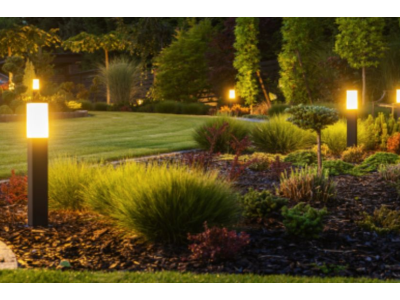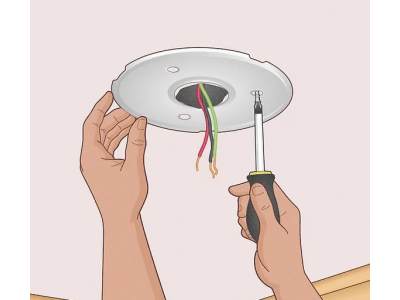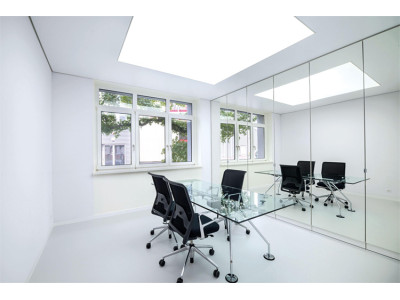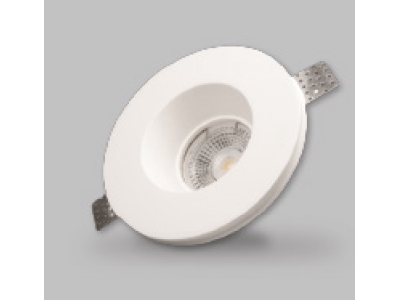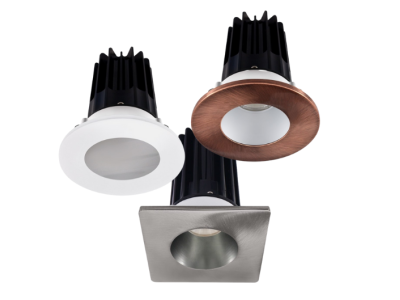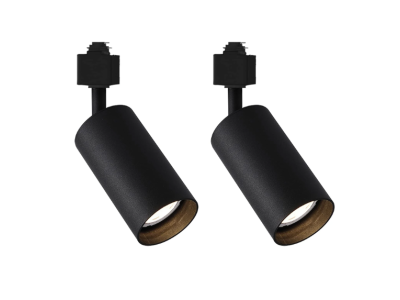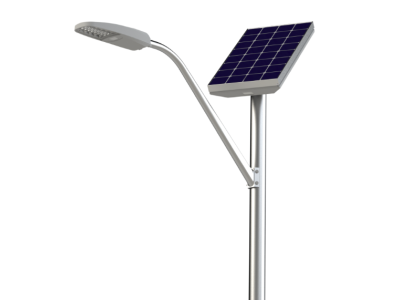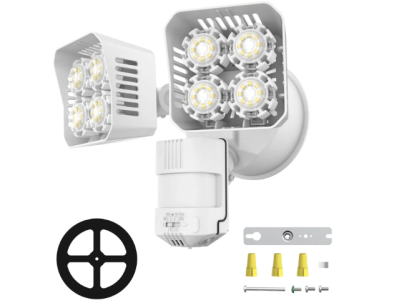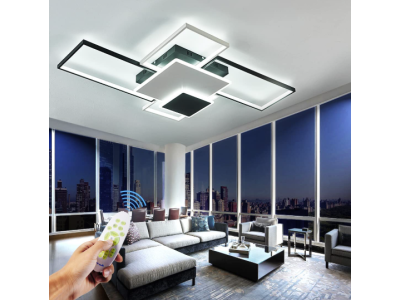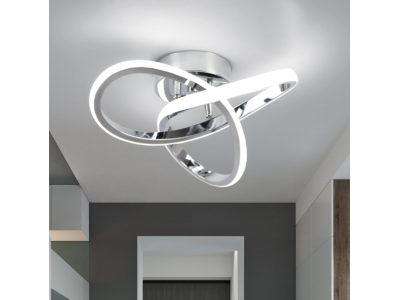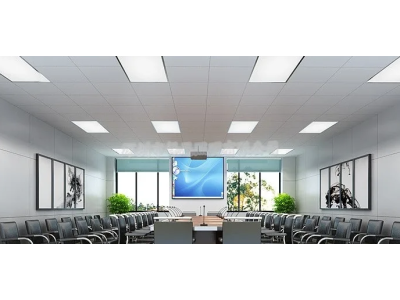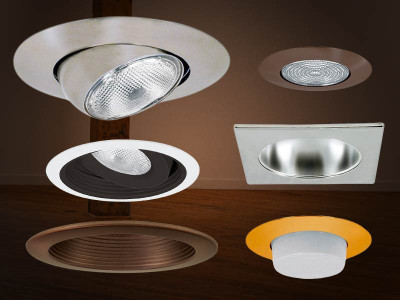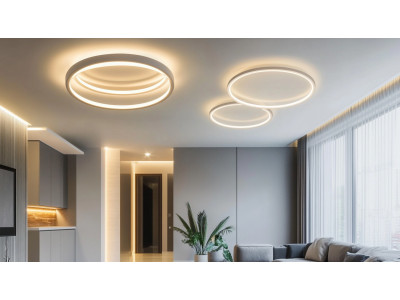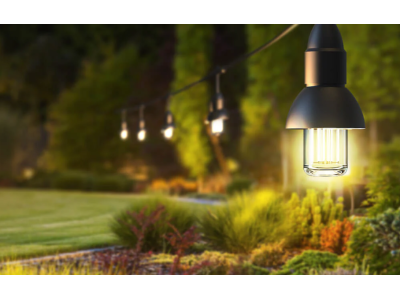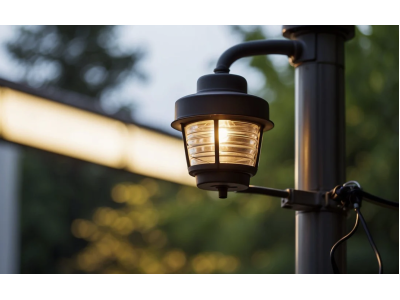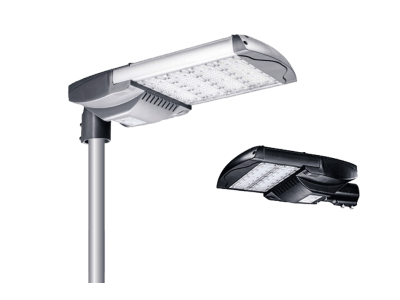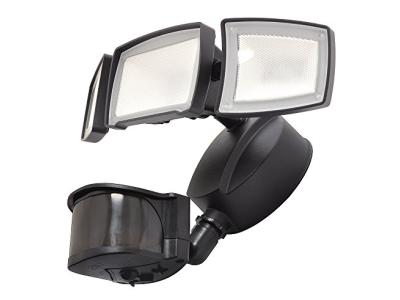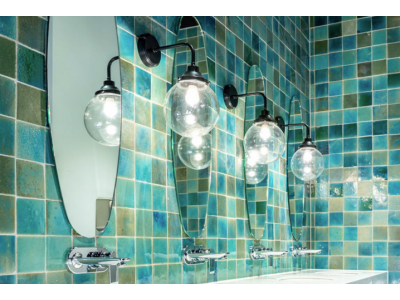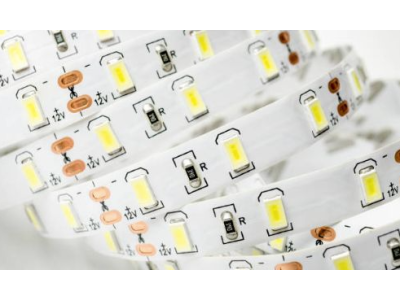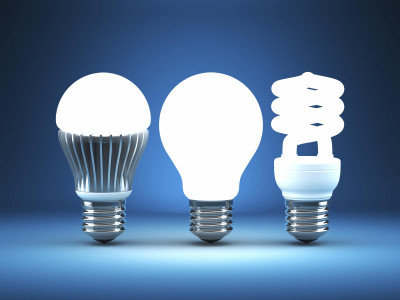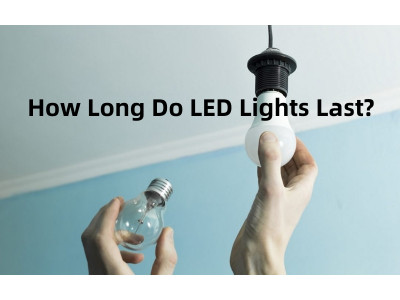
Artificial electric lighting systems play a pivotal role in modern life, enhancing visibility, safety, and ambiance across various settings. From residential homes and commercial establishments to industrial facilities and public spaces, effective lighting solutions are essential for both functionality and aesthetics. This guide delves into the intricacies of artificial electric lighting systems, exploring their types, lamp varieties, key characteristics, and best practices for selection and installation.
Components of Artificial Electric Lighting Systems
Artificial electric lighting systems are complex, multi-component engineering setups where the end-user interacts with only a small portion of the overall equipment. The primary components include:
Electric Generating Units:
- Global Power Plants (Hydroelectric, Thermal, Nuclear): Provide electricity to the entire energy consumption structure of a region.
- Local Power Sources (Solar Panels, Wind Turbines): Supply additional power to individual buildings, such as residential homes, industrial enterprises, or commercial organizations.
Electricity Transportation Systems:
- Overhead Power Lines: Common in wide-scale power distribution.
- Cabled Networks: Used in urban and densely populated areas for reliable electricity supply.
Transformers and Converters:
- Transformers: Adjust voltage levels from transportation to consumer usage.
- Converters: Modify electrical current parameters to suit various lighting equipment.
Electricity Distribution Devices:
- Open-Type (ORU) and Closed-Type (ZRU) Distribution Units: Manage the distribution of electricity to different parts of a building or facility.
Protective Equipment:
- Relay Protection Circuits: Include resistance relays, current and voltage relays, arc and surge protection devices, and short-circuit protectors to safeguard against electrical faults.
Control and Management Equipment:
- Household Electric Meters: Monitor and measure electricity consumption.
- Automated Control Systems: Manage and account for commercial electricity usage.
User-End Equipment:
- Lighting Fixtures and Lamps: The visible components that provide illumination.
- Switches and Controls: Allow users to manage lighting as per their needs.
Classification of Artificial Electric Lighting Systems
Artificial electric lighting systems are categorized based on their application and functionality:
1. Residential Lighting Systems
Designed for use in homes, these systems provide ambient, task, and accent lighting to create comfortable living environments.
2. Commercial Lighting Systems
Used in businesses and commercial spaces, these systems ensure adequate illumination for workspaces, retail areas, and customer environments.
3. Industrial Lighting Systems
Tailored for manufacturing and industrial facilities, these systems offer high-intensity lighting for operational efficiency and safety.
4. Security Lighting Systems
Employed in commercial and industrial settings during non-operational hours to secure premises and deter unauthorized access.
5. Emergency Lighting Systems
Activated during extreme situations to provide essential illumination for safe evacuation and operational continuity.
Types of Emergency Lighting:
- Evacuation Lighting: Ensures minimal visibility for safe and efficient evacuation during emergencies.
- Safety Lighting: Maintains visibility in areas with continuous operations or potential hazards, activating when main lighting fails.
6. Signaling and Specialized Lighting Systems
Used to indicate hazardous areas or specific conditions, such as:
- Signal Lighting: Displays symbols for radiation, biological hazards, or high electromagnetic fields.
- Bactericidal Lighting: Utilizes UV or quartz light for sterilizing environments.
- Erythemal Lighting: Employs UV light at specific wavelengths to stimulate physiological processes.
Types of Lamps for Artificial Electric Lighting Systems
Lighting systems utilize various lamp types, each with distinct characteristics, advantages, and applications:
1. Incandescent Lamps (LON)
One of the earliest and most widely produced lamp types, incandescent lamps generate light by passing electricity through a tungsten filament, causing it to glow.
- Pros:
- Affordable and readily available.
- Emits warm, pleasant light.
- Cons:
- Low energy efficiency (only ~5% of energy used for light; the rest is heat).
- Short lifespan (~1,000 hours).
- Higher energy consumption compared to modern alternatives.
2. Metal Halide Lamps (MHL)
Gas-discharge lamps that produce light by passing an electric arc through a mixture of metal halides and mercury vapor.
- Pros:
- Higher efficiency and longer lifespan (~15,000 hours) compared to incandescent lamps.
- Brighter and whiter light, suitable for large areas.
- Cons:
- Higher initial cost.
- Longer warm-up time (30 seconds to 3 minutes).
- Requires specialized fixtures and ballasts.
3. Mercury Halide Lamps (DRL)
A subtype of metal halide lamps where the discharge occurs in mercury vapor, producing intense and bright light.
- Pros:
- High luminous efficacy (~55 lumens per watt).
- Longer lifespan (~10,000 hours).
- Cons:
- Sensitive to low temperatures.
- Long warm-up time (~10 minutes).
- Contains mercury, posing environmental concerns.
Variants: Mercury-Tungsten Lamps (DRV)
These lamps include tungsten filaments alongside mercury vapor, allowing operation without ballasts but with reduced lifespan (~4,000 hours) and lower efficacy (~30 lumens per watt).
4. Sodium Lamps (DNAT)
Gas-discharge lamps that emit light through the excitation of sodium vapor, available in low-pressure (yellow-orange light) and high-pressure (brighter yellow light) variants.
- Pros:
- Extremely high luminous efficacy (~150 lumens per watt).
- Long lifespan (~30,000 hours).
- Cons:
- Limited color rendering, resulting in monochromatic yellow-orange light.
- Long startup time (up to 7 minutes).
- Primarily used in outdoor and industrial applications.
5. Compact Fluorescent Lamps (CFL)
Energy-saving lamps that use fluorescent technology in a compact form, often replacing incandescent bulbs in household settings.
- Pros:
- Significantly higher energy efficiency (~60 lumens per watt).
- Longer lifespan (~8,000 hours).
- Available in various shapes and color temperatures.
- Cons:
- Contains mercury, requiring careful disposal.
- Warm-up time and potential flickering at low temperatures.
6. Light Emitting Diode (LED) Lamps
The most energy-efficient and longest-lasting lamp type, LEDs produce light through electroluminescence in semiconductor materials.
- Pros:
- Highly energy-efficient (up to 10 times more efficient than incandescent lamps).
- Extremely long lifespan (~30,000 hours).
- Available in a wide range of colors and color temperatures.
- No harmful substances (e.g., mercury).
- Cons:
- Higher initial cost compared to other lamp types.
- Potential for color shifting and glare if not properly diffused.
Key Characteristics of Artificial Electric Lighting Systems
Understanding the fundamental characteristics of lighting systems is crucial for selecting the appropriate solutions for different environments:
1. Illuminance
Measured in lux (lx), illuminance quantifies the amount of light falling on a specific surface area. It is essential for determining the adequacy of lighting for various tasks and settings.
2. Uniformity of Lighting
This parameter assesses the consistency of light distribution across a surface, expressed as the ratio of minimum to average illuminance (D = Emin / Eavg). Values closer to one indicate more uniform lighting, reducing shadows and glare.
3. Power Factor
The power factor measures the efficiency of electrical energy usage in lighting systems. A higher power factor signifies more effective conversion of electrical power into usable light, minimizing energy losses and preventing overheating of electrical circuits.
4. Glare
Glare occurs when excessive brightness reduces visibility or causes discomfort. It can be categorized as:
- Direct Glare: When a light source is directly visible to the eyes.
- Reflected Glare: When light reflects off surfaces, causing visual discomfort.
5. Flicker
Measured in hertz (Hz), flicker refers to the fluctuation in light intensity. Visible flicker can lead to eye strain, headaches, and reduced productivity. Modern lighting technologies aim to minimize flicker to enhance visual comfort.
6. Color Temperature
Expressed in Kelvin (K), color temperature describes the hue of light emitted by a lamp:
- Warm Light (2700K-3000K): Creates a cozy and inviting atmosphere, suitable for residential settings.
- Neutral Light (3500K-4100K): Provides a balanced lighting environment, ideal for offices and workspaces.
- Cool Light (5000K-6500K): Enhances alertness and visibility, commonly used in industrial and commercial applications.
7. Color Rendering Index (CRI)
Measured on a scale from 0 to 100, CRI evaluates a light source's ability to accurately render colors compared to natural light. Higher CRI values indicate better color differentiation and fidelity, crucial for environments where color accuracy is important, such as retail and art studios.
Advantages and Disadvantages of Artificial Electric Lighting Systems
Advantages
Enhanced Visibility and Safety:
- Provides necessary illumination for daily activities, ensuring safety and efficiency in various environments.
Energy Efficiency:
- Modern lighting technologies, particularly LEDs, offer significant energy savings, reducing electricity consumption and operational costs.
Long Lifespan:
- Advanced lamp types like LEDs and fluorescent lamps have extended lifespans, minimizing the frequency of replacements and maintenance.
Versatility and Design Flexibility:
- A wide range of lamp types and fixtures allows for creative and functional lighting designs tailored to specific needs and aesthetics.
Environmental Benefits:
- Energy-efficient lighting reduces carbon footprint. LED lamps, in particular, are free from harmful substances like mercury, promoting environmentally friendly practices.
Improved Color Rendering:
- High CRI lamps enhance the visual quality of spaces by accurately displaying colors, beneficial for both aesthetic and functional purposes.
Disadvantages
Initial Cost:
- Advanced lighting technologies, especially LEDs, may have higher upfront costs compared to traditional lamp types like incandescent bulbs.
Installation Complexity:
- Certain lighting systems, such as metal halide lamps or complex automated systems, require specialized installation and maintenance.
Environmental Concerns:
- Some lamp types, like fluorescent and metal halide lamps, contain hazardous materials (e.g., mercury) necessitating careful disposal and handling.
Compatibility Issues:
- Not all lamp types are compatible with existing fixtures or control systems, potentially leading to additional costs for upgrades or modifications.
Light Quality Issues:
- Lower-quality lamps may produce uneven lighting, flicker, or poor color rendering, negatively impacting comfort and functionality.
Best Practices for Selecting and Installing Artificial Electric Lighting Systems
1. Assess Lighting Needs
- Functionality: Determine the primary purpose of the lighting (e.g., ambient, task, accent).
- Space Characteristics: Consider room size, layout, and existing architectural features.
- User Preferences: Take into account color temperature preferences and desired aesthetic outcomes.
2. Choose the Right Lamp Type
- Energy Efficiency: Opt for energy-efficient lamp types like LEDs for long-term savings.
- Lifespan: Consider lamps with longer lifespans to reduce maintenance frequency.
- Color Rendering: Select lamps with appropriate CRI values based on the importance of color accuracy in the space.
3. Plan for Uniform Lighting
- Fixture Placement: Strategically position fixtures to ensure even light distribution and minimize shadows.
- Layered Lighting: Combine ambient, task, and accent lighting to achieve a balanced and versatile lighting environment.
4. Incorporate Smart Controls
- Dimmers and Sensors: Utilize dimmers and occupancy sensors to optimize energy usage and enhance user control.
- Automated Systems: Integrate lighting systems with smart home technologies for remote management and automation.
5. Prioritize Safety and Compliance
- Electrical Standards: Ensure all lighting installations comply with local electrical codes and safety standards.
- Protective Measures: Implement safeguards against electrical faults, overloading, and exposure to hazardous materials.
6. Optimize for Energy Savings
- Energy-Efficient Fixtures: Choose fixtures that complement energy-efficient lamp types.
- Insulation and Sealing: Improve room insulation to retain heat and reduce the overall lighting load.
7. Maintain and Upgrade Regularly
- Routine Inspections: Regularly inspect lighting systems for wear, damage, and performance issues.
- Upgrades: Stay informed about advancements in lighting technology to incorporate improvements that enhance efficiency and functionality.
Conclusion
Artificial electric lighting systems are integral to modern living and working environments, offering enhanced visibility, safety, and aesthetic appeal. By understanding the various types of lighting systems, lamp varieties, and their key characteristics, users can make informed decisions to select the most suitable lighting solutions for their specific needs. Emphasizing energy efficiency, safety, and design flexibility ensures that lighting systems not only meet functional requirements but also contribute to the overall ambiance and sustainability of spaces.
Implementing best practices in selection and installation, coupled with regular maintenance, will maximize the benefits of artificial electric lighting systems, ensuring long-term performance and satisfaction. As technology continues to advance, staying informed about new developments and integrating smart controls will further enhance the efficiency and versatility of lighting solutions in diverse settings.
Key Takeaways:
Understand Lighting System Components: Familiarize yourself with the essential components of artificial electric lighting systems to make informed decisions.
Assess Lighting Requirements: Evaluate the specific needs of your space, including functionality, room size, and user preferences.
Choose Energy-Efficient Solutions: Opt for energy-efficient lamp types like LEDs to reduce electricity consumption and operational costs.
Prioritize Safety and Compliance: Ensure all lighting installations adhere to safety standards and electrical codes to prevent hazards.
Incorporate Smart Controls: Utilize smart technologies for enhanced control, automation, and energy management.
Plan for Uniform Lighting: Strategically place fixtures and employ layered lighting to achieve balanced illumination.
Consider Lamp Characteristics: Select lamps based on key characteristics such as illuminance, color temperature, and color rendering index.
Maintain Regularly: Conduct routine inspections and maintenance to ensure optimal performance and longevity of lighting systems.
Stay Updated on Advancements: Keep abreast of new lighting technologies and trends to continuously improve and upgrade your lighting solutions.
Balance Costs and Benefits: Weigh the initial investment against long-term energy savings and enhanced lighting quality to choose the most cost-effective solutions.
For expert assistance in selecting and installing artificial electric lighting systems for homes and dachas, ensuring compatibility with your property’s infrastructure, or accessing comprehensive project documentation, visit safsale.com. Our specialists are ready to help you create a reliable, efficient, and aesthetically pleasing lighting environment tailored to your specific needs.
Important Notice on Standards
All referenced documents and standards in this guide are provided for informational purposes only and should not be used as official publications. For authoritative guidelines and legal requirements, always consult the official standards organizations or regulatory bodies.
